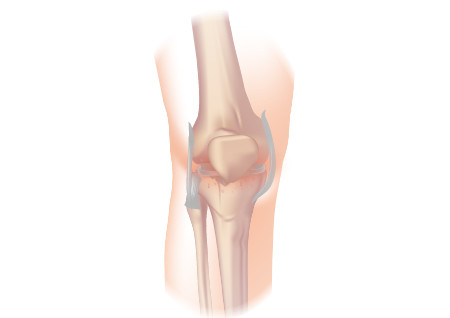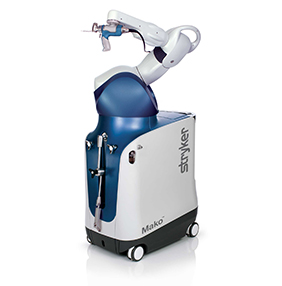Robotic Knee Replacement Melbourne
What is Knee Replacement Surgery?
Knee replacement surgery is a type of joint replacement surgery that helps to relieve pain and restore function for patients with severe conditions such as knee arthritis. The diseased or damaged joint is removed and replaced with a new knee implant, designed to function as closely as possible to a normal knee joint. Robotic Knee Replacement is the latest tool to aid surgeons in improving accuracy and precision.

Traditional knee replacements
Traditionally, knee replacements have been implanted with manual alignment, where the surgeon tries to match the normal alignment of the knee using jigs and guides placed by hand. This has been and still is a reliable and safe surgical procedure but malalignment can occur. Surgeons have continually strived to achieve better accuracy and alignment. This led to the development and use of computer navigation.
Robotic knee replacements
In computer navigated robotic knee replacement surgery, reference markers are placed and the knee is mapped during surgery. This information is read by a computer within the operating room and provides the surgeon with more information to choose the correct size of implant and for accuracy of alignment. The cuts made with this system can also be checked in real-time for greater accuracy. Computer navigation has reduced the number of ‘outliers’ in terms of malalignment of knee replacements.
Robotic Knee Replacement in Melbourne

Mr Chua has been performing knee replacements in Melbourne with full computer navigation since he began practicing as a consultant orthopaedic surgeon. With the experience of more than 150 cases, Soong has built up great skill with this technique.
The Mako robotic arm is the next evolution of the computer navigation technique, with the goal of even greater accuracy and precision of alignment and implantation. It uses similar techniques to computer navigation and as a long term user of navigation, Soong has quickly and smoothly transitioned to performing robotic knee replacement.
Types of robotic knee replacements
Robotic knee replacement can be used for partial knee replacements (unicompartment or patellofemoral) or total knee replacements. A robotic arm with a controlled saw or burr is used to cut your bone in an extremely precise way, with the 3-D model as a guide.
How does a robotic knee replacement work?
The Mako robotic arm is the latest tool in increasing the accuracy and precision of knee replacement surgery.
The robotic software allows Mr Chua to pre-plan your surgery with accuracy and personalisation. A pre-operative CT scan is uploaded into the robot system and generates a 3D computer model of your knee.
Mr Chua can then perform the operation using a virtual simulation and position the implant to match your specific anatomy. The personalised pre-operative plan is then ready for use in surgery. Adjustments to the plan can still be made during surgery although this is not commonly needed.
During surgery, your bony anatomy is already uploaded into the robot system. The MAKO™ system utilises a haptic robotic arm so that cuts can only be made within the pre-defined limits according to your specific plan.
The surgeon still performs the surgery, using the robot arm to make cuts for implanting the knee replacement.
Due to the accuracy of the robot, there is theoretically less damage to adjacent soft tissues and ligaments of the knee, which may result in less post-operative pain and a quicker recovery.
What are the benefits of a robotic knee replacement?
- Greater accuracy and alignment of knee replacements, which may result in better functioning and longer lasting knee replacements.
- Patient specific – a knee replacement personalised to fit your anatomy.
- Less damage to adjacent soft tissues and ligaments, theoretically resulting in less post-operative pain. This may result in a quicker recovery due to reduced soft tissue damage.
- Less exposure is required so the operation can be performed through a smaller incision than traditional knee replacements.
- With less soft tissue damage and post-operative pain, an earlier discharge may be possible (a peri-operative physician and physiotherapist will be involved in your care, ensuring your safety for discharge).
- This in turn may mean that your knee function and mobility returns earlier, allowing you to return to your normal activities sooner.
Can a robotic knee replacement be performed by any surgeon and at any hospital?
No. Robotic knee replacements can only be performed by certain surgeons and knee replacement specialists who have completed strict training requirements and are accredited to use the Mako robot. Mr Chua was one of the first surgeons to be accredited to use the Mako robot for knee replacements in Melbourne. He has since furthered his skills on surgical visits to the United States.
Only certain hospitals in which the operating theatre staff have undergone specific training will gain accreditation to use the Mako robot.
Mr Chua is able to perform this procedure at any of his knee replacement hospitals in Melbourne, as they have all been accredited for Mako robotic surgery:

